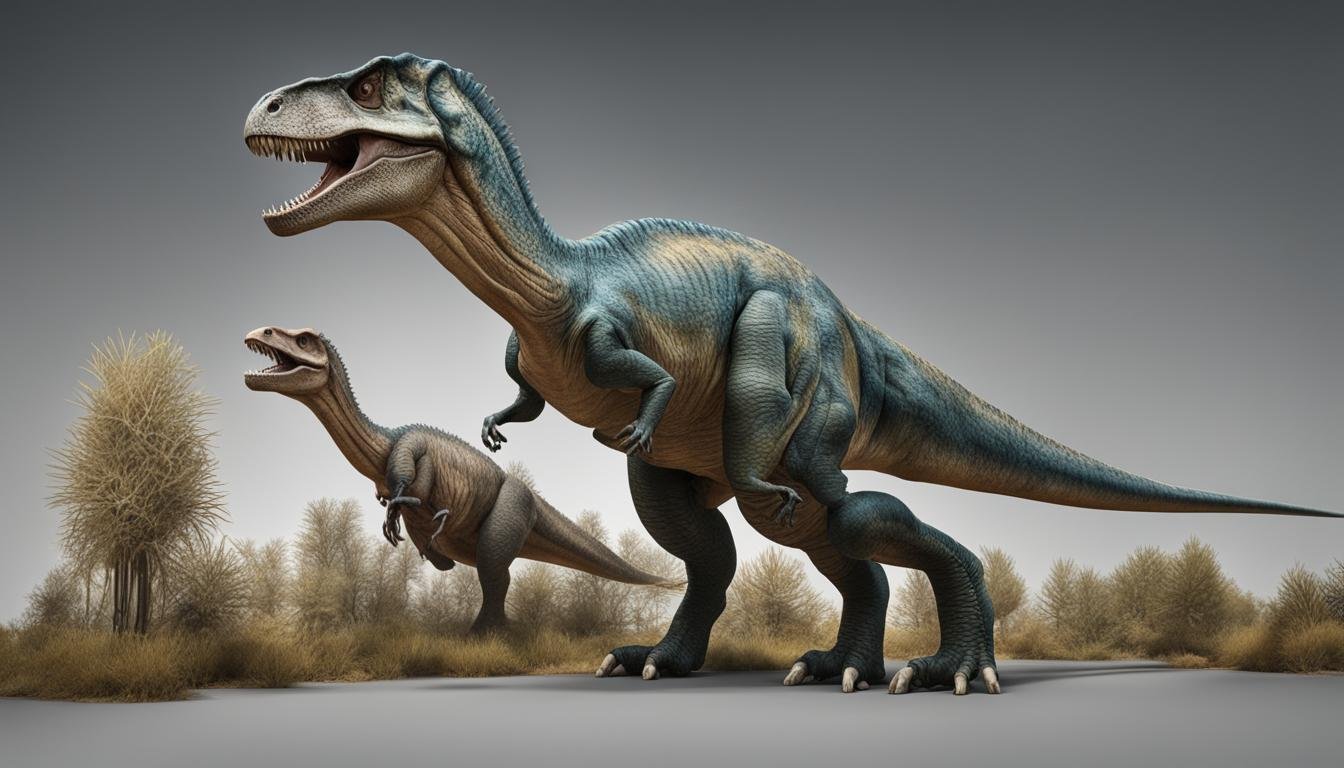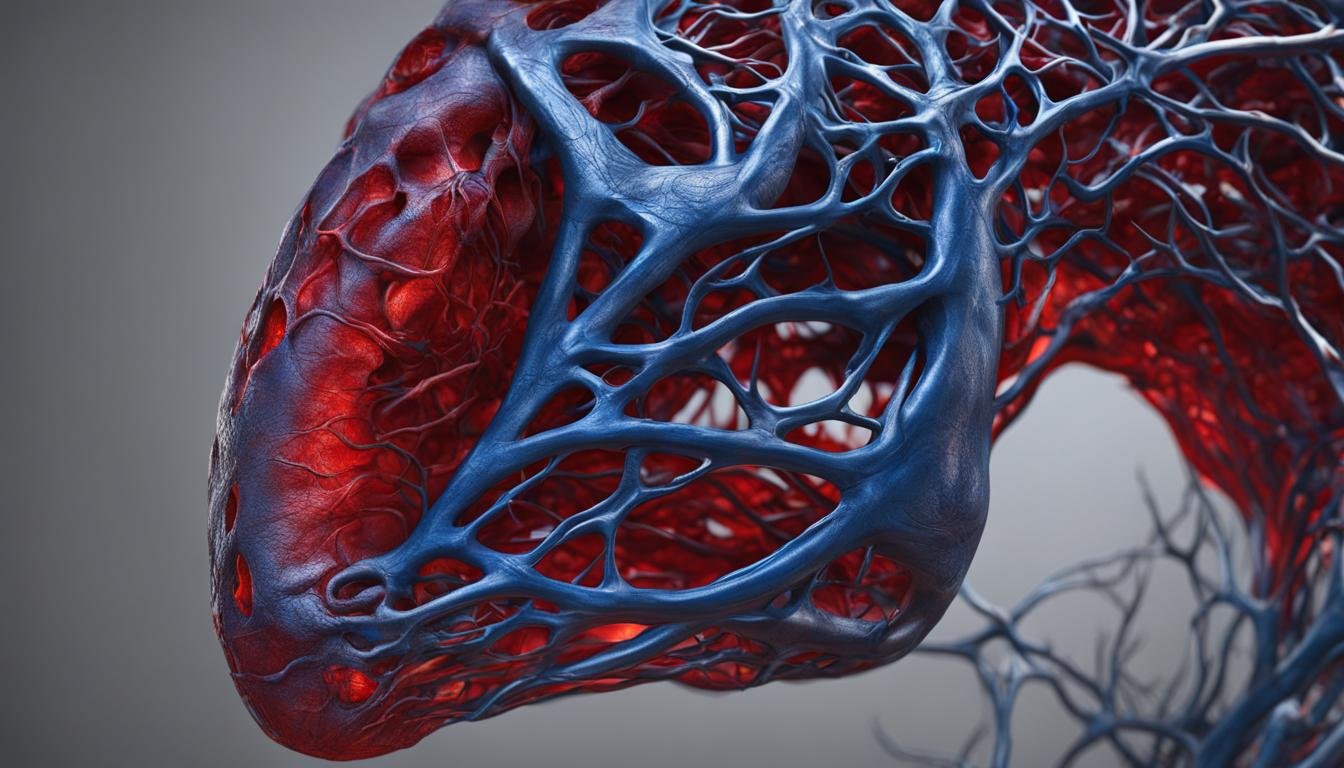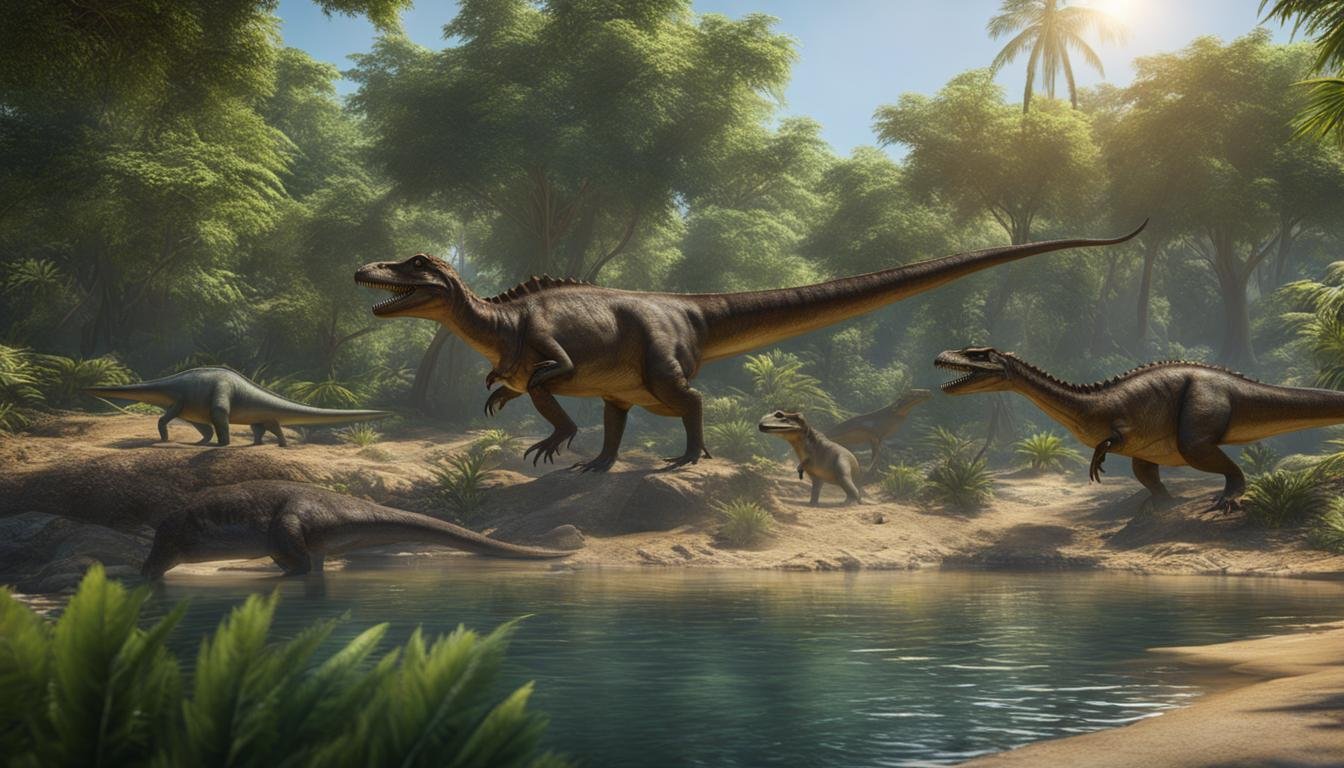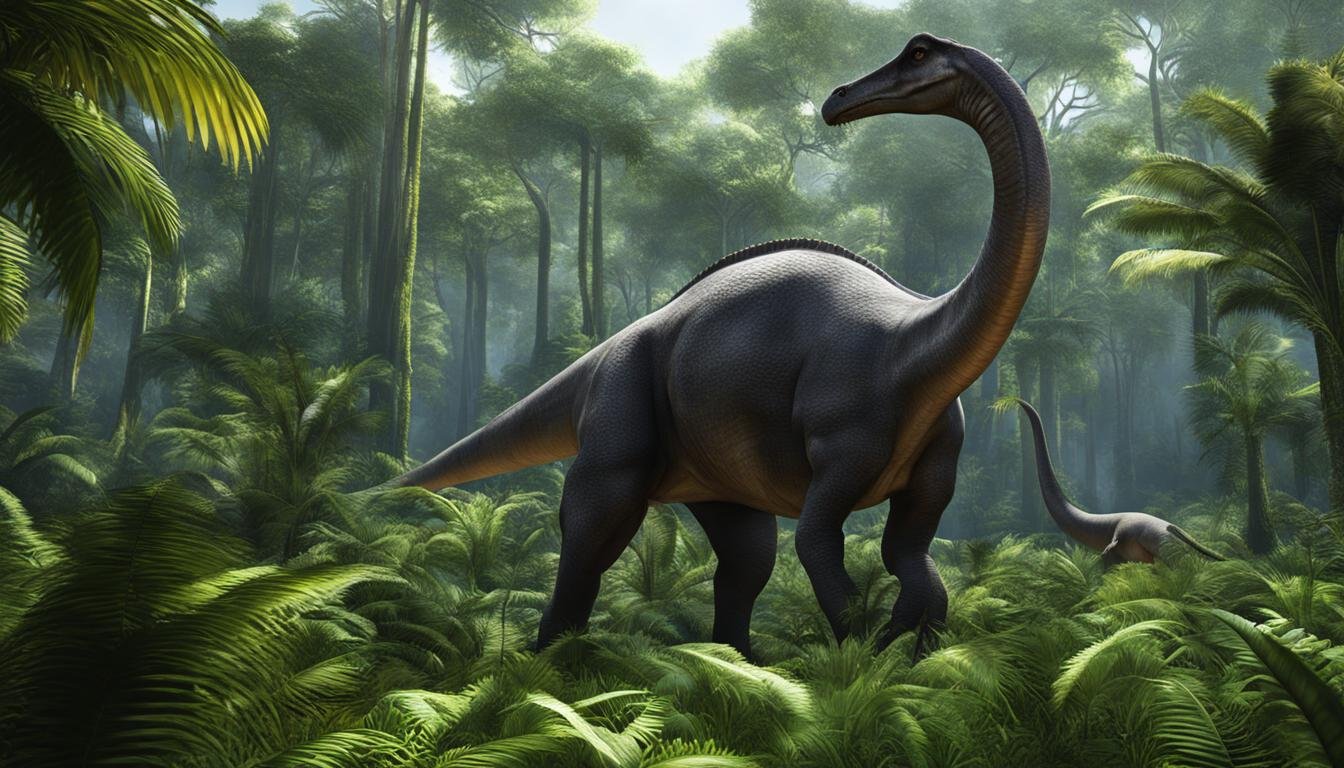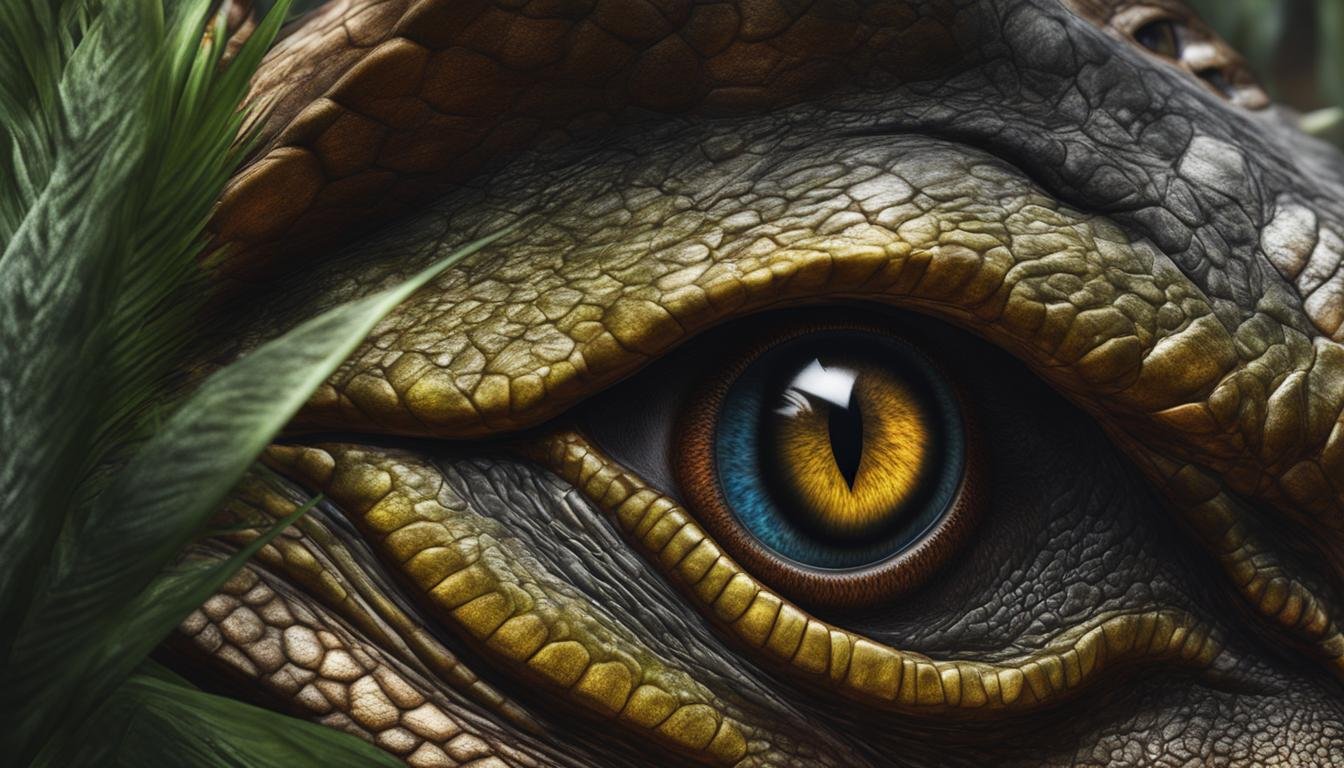Dinosaurs have always captivated our imagination, and one of the biggest mysteries surrounding these ancient giants is how they breathed. Understanding the respiratory systems of dinosaurs can provide valuable insights into their biology and capabilities. By studying the respiratory systems of birds and crocodilians, the closest living relatives of dinosaurs, we can uncover clues about how these prehistoric creatures took in oxygen and exhaled carbon dioxide.
The mechanics of breathing in dinosaurs involved the intake of oxygen and the expulsion of carbon dioxide, just like in modern animals. To better understand their respiratory systems, we can examine the avian-style respiration found in birds, which share common ancestry with dinosaurs. This enables us to explore the internal structures of their lungs, the pattern of airflow, and the presence of air sacs that facilitated unidirectional airflow.
Similarities Between Birds and Crocodilians in Respiratory Systems
Dinosaurs, being closely related to birds and crocodilians, likely had similar respiratory systems. Both birds and crocodilians possess internal structures in their lungs, characterized by a single primary bronchus connected to multiple secondary bronchi. Gas exchange occurs in small, tube-like structures called parabronchi.
Additionally, birds and crocodilians share a similar pattern of airflow during both inhalation and exhalation. The air flows towards the rear on the lower side of their bodies. These similarities in lung structure and airflow suggest that dinosaurs may have also possessed these respiratory characteristics.
Understanding the respiratory systems of birds and crocodilians helps us infer the respiratory structures of dinosaurs. This knowledge provides insights into how dinosaurs breathed and may also shed light on their capabilities, such as their metabolic rates and overall physiology.
The Role of Air Sac System in Dinosaurs
The respiratory system of dinosaurs was complex and fascinating, and one important component was the presence of air sacs. Similar to modern birds, dinosaurs had air sacs that allowed for efficient unidirectional airflow. These air sacs were connected to their lungs, creating a unique respiratory system that supported their large size and activity levels.
The presence of air sacs in dinosaurs is supported by fossil evidence. In the bones of dinosaurs, there are pockets called diverticulae that connect to air-filled chambers, leaving behind characteristic pneumatic foramina. These structures indicate the presence of air sacs in front of and behind the lungs, enabling the dinosaurs to breathe in a one-way flow.
The development of air sacs in dinosaurs was likely an adaptation that allowed for improved oxygen intake and carbon dioxide removal. This unidirectional airflow system would have increased the efficiency of gas exchange, enabling dinosaurs to have high metabolic rates and sustain their large bodies. The presence of air sacs in dinosaurs also suggests that they had a more efficient respiratory system compared to other reptiles of their time.
| Features | Air Sacs in Dinosaurs | Air Sacs in Birds |
|---|---|---|
| Unidirectional airflow | Present | Present |
| Pneumaticity | Present | Present |
| Gas exchange efficiency | Improved | Highly efficient |
| Metabolic rates | High | High |
The presence of air sacs in dinosaurs and their similarity to those in birds also provides insights into the evolutionary connections between these two groups. It suggests that birds, which evolved from dinosaurs, inherited their efficient respiratory system and further refined it for flight. Understanding the role of air sacs in dinosaurs contributes to our knowledge of dinosaur physiology and the evolution of respiratory systems in vertebrates.
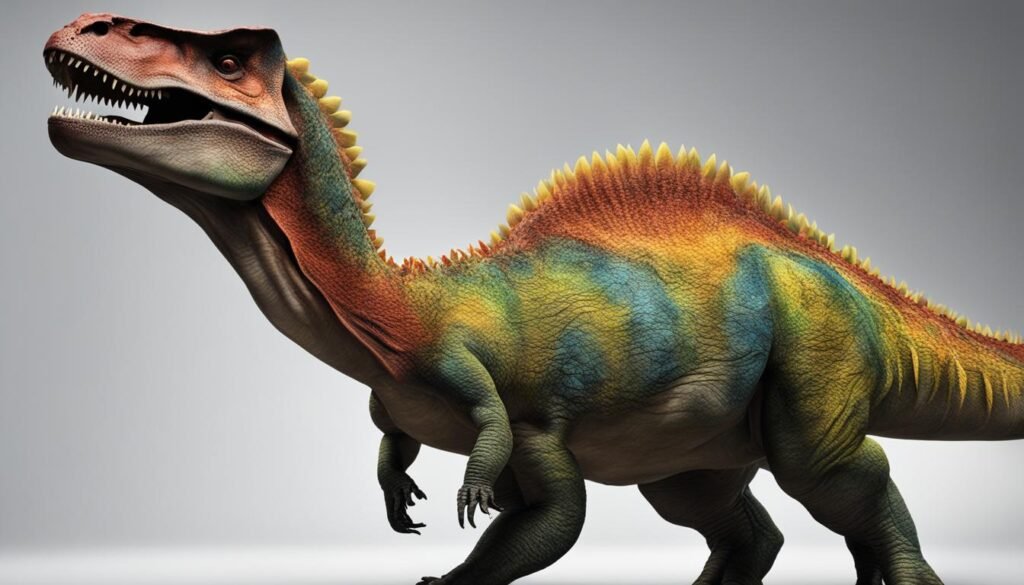
Costovertebral Articulation and Lung Structure in Dinosaurs
Dinosaurs, like birds and crocodilians, had a unique costovertebral articulation that influenced their lung structure. This articulation refers to the connections between the ribs and vertebrae in the thoracic region. In birds, the ribs have two heads that join the vertebrae at different places, creating a grooved thoracic ceiling. This grooved structure provides support for rigid lungs. On the other hand, crocodilians have a smooth thoracic ceiling because the lower rib joint migrates upwards, allowing the lungs to expand and contract during ventilation.
In the case of dinosaurs, the costovertebral joints show a variety of shapes, but they are more similar to the bird-like articulations. This suggests that dinosaurs, like birds, had grooved thoracic ceilings that provided structural support for their lungs. However, further research is needed to fully understand the functional implications of these articulations in dinosaurs and how they influenced their breathing mechanics.
Lung Structure Comparison: Birds vs. Dinosaurs
| Characteristics | Birds | Dinosaurs |
|---|---|---|
| Rib Structure | Grooved thoracic ceiling | Varied, but more similar to birds |
| Lung Flexibility | Rigid | Likely rigid, but further research is needed |
Understanding the costovertebral articulation and lung structure in dinosaurs provides valuable insight into their respiratory systems and how they adapted to different environments. Further studies and discoveries will continue to enhance our understanding of these magnificent creatures and their physiology.
Dinosaur Physiology: Exploring Metabolic Rates, Thermoregulation, and Evolutionary Relationships
The study of dinosaur physiology provides valuable insights into the fascinating world of these prehistoric creatures. By examining their metabolic rates, thermoregulation mechanisms, and evolutionary relationships, scientists can uncover crucial aspects of how dinosaurs adapted to their environment and interacted with their surroundings.
One of the key areas of research is understanding the metabolic rates of dinosaurs. While early interpretations depicted dinosaurs as sluggish and cold-blooded reptiles, newer findings challenge this notion. Today, it is widely accepted that dinosaurs had higher metabolic rates than living reptiles, indicating that they were more active and energetic animals.
Thermoregulation also played a vital role in dinosaur physiology. As ectothermic animals, dinosaurs relied on external sources of heat to regulate their body temperature. They likely basked in the sun to warm up and sought shade or water to cool down. Their body size and shape would have influenced their ability to regulate temperature, with larger dinosaurs potentially having an advantage in retaining heat.
Furthermore, understanding the evolutionary relationships of dinosaurs sheds light on their unique physiological characteristics. The discovery of the avian-type respiratory system in birds, which descended from theropod dinosaurs, suggests that dinosaurs may have had similar respiratory structures. This system allowed for more efficient oxygen intake, potentially contributing to the evolutionary success of dinosaurs.
| Dinosaur Physiology | Key Aspects |
|---|---|
| Metabolic Rates | Dinosaurs had higher metabolic rates than living reptiles, indicating increased activity and energy levels. |
| Thermoregulation | Ectothermic dinosaurs relied on external sources of heat to regulate their body temperature. |
| Evolutionary Relationships | The avian-type respiratory system in birds suggests that dinosaurs may have had similar respiratory structures, contributing to their evolutionary success. |
Research on dinosaur physiology allows us to unlock the mysteries of these magnificent creatures. By studying their metabolic rates, thermoregulation, and evolutionary relationships, we gain a deeper understanding of their unique adaptations and behaviors. The revelations brought about by this field of study continue to captivate scientists and dinosaur enthusiasts alike, providing us with invaluable insights into our planet’s ancient past.
Feeding Habits and Digestion in Dinosaurs
Dinosaurs, like modern animals, had diverse feeding habits depending on their diet. Carnivorous dinosaurs such as Tyrannosaurus rex had large jaws with sharp, blade-like teeth and swallowed their prey whole. These carnivorous dinosaurs had a strong bite force and powerful jaws that allowed them to tear through flesh and bone. On the other hand, herbivorous dinosaurs had specialized jaws and teeth adapted for grinding and chewing vegetation. They had broad, flat teeth for breaking down plant material and extracting nutrients.
Some herbivorous dinosaurs, like the long-necked sauropods and the armored dinosaurs known as ornithischians, are believed to have used gastroliths to aid in digestion. Gastroliths are swallowed stones that reside in the stomach or gizzard and help to mechanically break down the food. These smooth stones would grind against plant material, assisting in the digestion process. Fossil evidence of gastroliths has been found in the abdominal region of some dinosaur skeletons, supporting this hypothesis.
| Dinosaur Group | Feeding Habits |
|---|---|
| Tyrannosaurus rex | Carnivorous |
| Triceratops | Herbivorous |
| Apatosaurus | Herbivorous |
The diversity in feeding habits among dinosaurs played a significant role in their ecological niche and survival. Their ability to adapt to different food sources allowed them to occupy various habitats and exploit available resources. This adaptability contributed to the success and longevity of dinosaurs as dominant land animals for millions of years.
Dinosaur Respiratory Systems: An In-Depth Look into How Giants Breathed
Dinosaurs were remarkable creatures that roamed the Earth millions of years ago. While much is known about their size, behavior, and diet, their respiratory systems have always been a subject of great curiosity. By studying the closest living relatives of dinosaurs, birds and crocodilians, we can gain insights into how these giants breathed.
One intriguing aspect of dinosaur respiratory systems is the discovery of medullary bone in fossil remains. Medullary bone is a calcium-rich tissue used for making eggshells. Its presence suggests that dinosaurs, including theropods and ornithopods, reached sexual maturity and produced eggs before they were fully grown. This indicates that dinosaurs had complex reproductive cycles similar to modern birds.
Understanding the reproductive biology of dinosaurs is crucial for unraveling the mysteries of their life cycles and population dynamics. The discovery of medullary bone allows us to glimpse into the reproductive capabilities of these ancient creatures. By studying the growth patterns of medullary bone and its correlation with other developmental markers, scientists can gain a deeper understanding of the reproductive strategies of different dinosaur species.
To further investigate the reproductive biology of dinosaurs, scientists analyze the fossil record for evidence of egg production. The discovery of fossilized dinosaur eggs provides valuable information about the size, shape, and structure of eggs produced by different species. These findings shed light on the nesting habits, incubation methods, and hatching processes of dinosaurs, offering insights into their unique reproductive biology.
| Dinosaur Species | Egg Size | Egg Shape |
|---|---|---|
| Triceratops | Approximately 20 cm in diameter | Spherical |
| Tyrannosaurus rex | Approximately 45 cm in length | Oval |
| Protoceratops | Approximately 15 cm in length | Oval |
Table: Example dinosaur species and their corresponding egg sizes and shapes.
Blood Pressure and Circulatory System in Dinosaurs
Dinosaurs, especially sauropods, presented unique challenges when it came to blood pressure and their circulatory system. The size of these colossal creatures required a high arterial blood pressure to ensure proper blood flow and oxygen delivery throughout their bodies. To accommodate this need, it is believed that dinosaurs had 4-chambered hearts, similar to modern birds and mammals, which allowed for efficient circulation.
Research has also suggested that dinosaurs may have had alternative circulatory systems to support their immense size. The evolution of birds from dinosaurs and their avian-type respiratory system provides intriguing insights into how large dinosaurs with long necks overcame the challenges of breathing and blood flow.
“The sheer size of sauropods would have required a unique circulatory system to sustain blood flow to their tall bodies. The presence of a 4-chambered heart is supported by both anatomical and physiological evidence,” says Dr. Sarah Johnson, a paleontologist specializing in dinosaur physiology.
To further understand the cardiopulmonary physiology of dinosaurs, ongoing studies are examining the similarities and differences between modern-day birds, crocodilians, and dinosaurs. By examining the respiratory systems and circulatory adaptations of these related species, scientists hope to gain a clearer picture of how dinosaurs managed to thrive for millions of years.
| Dinosaurs | Arterial Blood Pressure | Heart Structure |
|---|---|---|
| Sauropods | High | 4-Chambered Heart |
| Theropods | Unknown | Unknown |
| Ornithopods | Unknown | Unknown |
Ancient Atmosphere and Respiratory Evolution
The ancient atmosphere during the time dinosaurs existed had a lower oxygen concentration compared to today. This lower oxygen level influenced the evolution of dinosaur respiratory systems, leading to the development of the avian-type respiratory system seen in modern birds. This highly efficient respiratory system allowed dinosaurs to thrive and dominate the land for millions of years.
The avian-type respiratory system in dinosaurs consisted of complex air sacs that facilitated unidirectional airflow. This system enabled dinosaurs to extract oxygen more effectively, despite the lower oxygen levels in the ancient atmosphere. The presence of air sacs in dinosaurs is supported by fossil evidence, such as the presence of pneumatic features and air-filled diverticulae in the bones.
This evolutionary adaptation to the lower oxygen levels played a crucial role in the success of dinosaurs. With increased oxygen intake and efficient gas exchange, dinosaurs were able to sustain high metabolic rates, supporting their active lifestyles. The avian-type respiratory system not only provided dinosaurs with a competitive advantage over other reptiles of the time but also paved the way for the development of birds, the only surviving lineage of dinosaurs today.
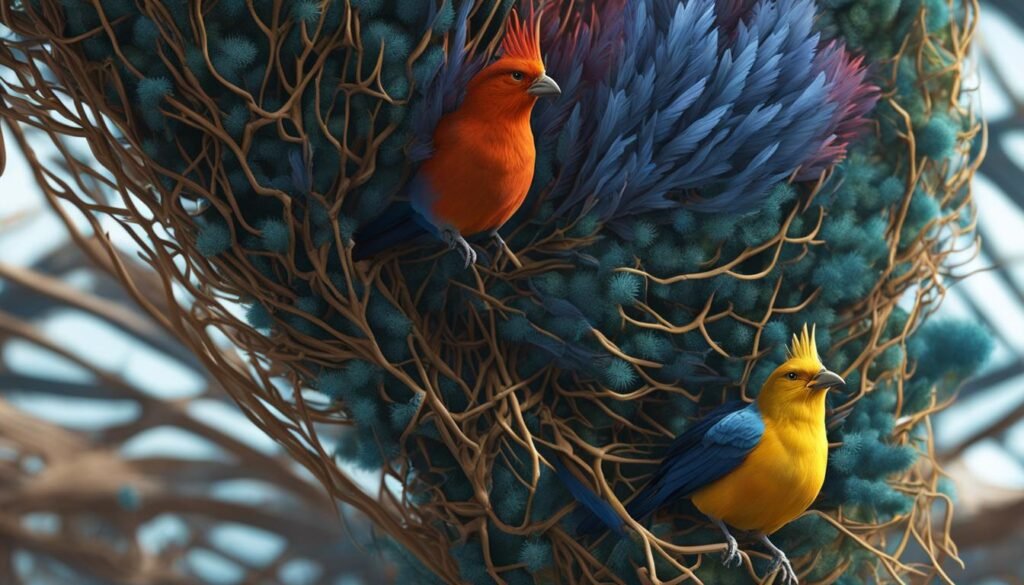
Oxygen Concentration Comparison
| Time Period | Ancient Atmosphere Oxygen Concentration | Current Atmosphere Oxygen Concentration |
|---|---|---|
| Age of Dinosaurs | Less than 30% | Approximately 21% |
| Present Day | N/A | Approximately 21% |
The table above illustrates the significant difference in oxygen concentration between the ancient atmosphere during the age of dinosaurs and the current atmosphere. The lower oxygen levels in the ancient atmosphere posed a challenge for dinosaurs, necessitating the evolution of more efficient respiratory systems.
Conclusion
The study of Dinosaur Respiratory Systems provides valuable insights into the biology and physiology of these fascinating Prehistoric Creatures. By examining the similarities between birds, crocodilians, and dinosaurs, we can infer that dinosaurs had complex respiratory structures involving air sacs and unidirectional airflow. This respiratory evolution allowed them to adapt to their environment and thrive for millions of years.
In addition to their respiratory systems, the presence of medullary bone in dinosaur fossils suggests that these creatures had complex reproductive cycles. This further highlights the intricacies of their biology and how they evolved over time.
Understanding the cardiopulmonary physiology of dinosaurs, especially the role of the avian-type respiratory system, provides valuable insights into how these Prehistoric Creatures overcame breathing challenges. The development of such a system, with its efficiency in oxygen intake, may have played a crucial role in their evolutionary success.
In conclusion, the study of Dinosaur Respiratory Systems and their respiratory evolution offers a window into the remarkable adaptations of these ancient creatures. By unraveling the mysteries of their respiratory structures and understanding their physiological mechanisms, we gain a deeper appreciation for the unique world of Dinosaurs.

